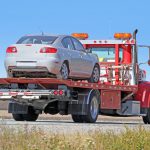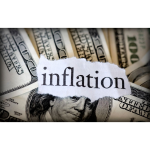Collaborative Efforts by OEMs to Enhance Affordability through Discounts and Incentive Programs

In response to the prevailing issue of unaffordability in the car market, multiple automakers are recognizing the need for action and indicating the reintroduction of incentives. With growing concerns over the affordability crisis, these manufacturers are actively exploring options to address the issue and provide relief to consumers.
Ford and General Motors Executives Express Expectations of Lower Pricing Pressures
Prominent figures within the automotive industry, such as Ford’s chief financial officer John Lawler and General Motors’ CFO Paul Jacobson, have recently shared their predictions regarding pricing pressures. Lawler anticipates that pricing pressures on Ford Blue products will ease in the latter half of 2023 as supply and demand levels normalize. Similarly, Jacobson expects average prices to revert back to 2022 levels before the end of the year.
Reticence on Affordability in the Wake of the COVID Pandemic
Since the onset of the COVID-19 pandemic, many car brands have been hesitant to address affordability concerns directly. Executives, including Stellantis CEO Carlos Tavares, have prioritized maintaining profitability over lowering Manufacturer’s Suggested Retail Prices (MSRPs), even with potential increases in sales volume. However, recent developments indicate a shifting mindset among industry leaders.
Tesla Leads the Way with Substantial Discounts, while Others Prioritize Profitability
In contrast to the cautious approach taken by most automakers, Tesla has been at the forefront of offering substantial discounts throughout 2023. The company has lowered prices on multiple occasions, demonstrating a proactive stance in addressing affordability concerns. However, other manufacturers have remained focused on preserving profitability, viewing higher profit margins as a priority over boosting sales volume.
Shift in Attitudes: Broader Focus on Affordability Beyond Electric Vehicles
Previously, discussions on pricing primarily targeted electric vehicles (EVs) amid concerns that Tesla was initiating a “price war” with traditional automakers. However, the statements made by Jacobson and Lawler suggest a broader change in attitudes toward affordability. The evolving perspective stems from the realization that demand bottlenecks are now beginning to impact the market, prompting a wider conversation on prices.
Demand Bottlenecks and Effects on Pricing Discussions
The current scenario is shaped by demand bottlenecks that are only now starting to manifest. Factors such as increased interest rates, inflation, and reduced loan approvals have caused many consumers to delay their car purchases. As inventory levels recover from the pandemic-induced slump, manufacturers are faced with the possibility of higher supply than demand, prompting the sudden emergence of pricing discussions.
Determining the Most Profitable Course: Incentives or Lower MSRPs?
Automaker executives are currently deliberating the most profitable course of action to address affordability concerns. While specific plans have yet to materialize, discussions are ongoing. The decision between offering incentives or lowering MSRPs remains a subject of consideration, as manufacturers assess the potential impact on their bottom line.
Potential for Discounts Offered through Dealerships as Supply and Demand Risks Increase
Even if automakers opted not to lower prices directly, consumers can potentially expect to see discounts offered through dealerships. Dealerships, often more sensitive to supply and demand risks than their OEM partners, may take the initiative to provide discounts to attract customers and adjust to the changing market dynamics.





